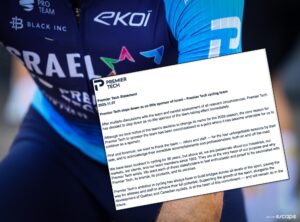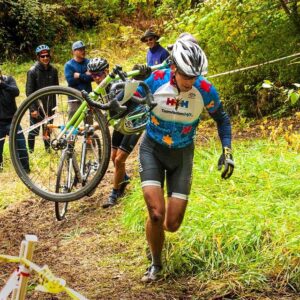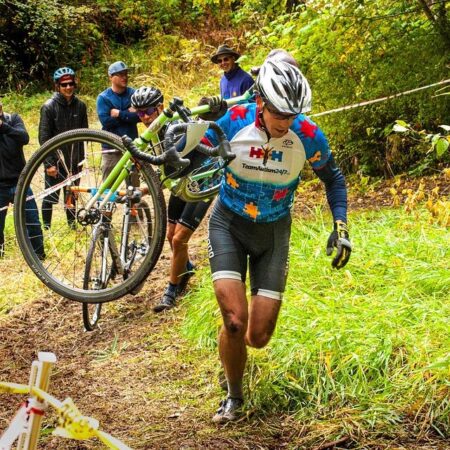In a strategic shift that could redefine his racing trajectory, Belgian cyclist Jasper Philipsen has expressed his intention to pivot away from the high-octane world of bunch sprints to concentrate more on the Classics in preparation for the 2026 season. The emerging star, known for his explosive sprinting ability, has revealed that his team is encouraging this transition, aiming to enhance his versatility and strength across a broader range of terrains. With a renewed focus on the iconic one-day races that challenge both endurance and tactical prowess, Philipsen’s decision signals his ambition to evolve as a rider in the highly competitive cycling landscape. As he prepares for the upcoming season, all eyes will be on the cyclist to see how this shift in training and racing priorities shapes his performance in the years to come.
Jasper Philipsen Shifts Focus to Classics Ahead of 2026 Season
Jasper Philipsen is taking a bold step in his career as he shifts his preparation focus towards the Classics, moving away from the traditional emphasis on bunch sprints. This strategic pivot comes as the team recognizes his potential to excel in the challenging terrain and demanding conditions that characterize the one-day races. Philipsen expressed his enthusiasm for this new direction, stating, “The team is trying to push me more towards the Classics, and I’m excited to embrace that challenge.” His dedication to competing in these prestigious races will involve enhanced training regimens and tailored strategies that reflect his strengths as a rider.
To facilitate this transition, Philipsen will be engaging in various preparatory activities, including:
- Endurance Training: Focusing on longer rides to build stamina
- Technical Skills: Practicing on cobblestones and hilly terrains
- Race Simulation: Participating in preparation races that mimic the Classics
In addition, he aims to participate in a series of key events leading up to the Classics, refining his skills and gaining valuable experience against some of the world’s best competitors. This strategic shift not only showcases Philipsen’s adaptability but also positions him as a formidable contender in the Classics arena as the 2026 season approaches.
Analyzing the Strategy Behind Philipsen’s Transition from Bunch Sprints
Jasper Philipsen’s recent shift toward the Classics has raised eyebrows among cycling enthusiasts, primarily because he has consistently been a strong performer in bunch sprints. This transition appears strategic, aimed at enhancing his versatility as a rider and optimizing his potential for success in a broader array of racing conditions. By focusing less on the fast-paced finishes typical of sprint stages, Philipsen aims to develop skills that could prove invaluable in challenging terrains, such as cobbled climbs and steep gradients, characteristic of major Classics like Paris-Roubaix and Tour of Flanders.
The decision to pivot his training emphasizes a holistic approach to development. Philipsen and his team have identified key areas for focus, including:
- Endurance Training: Building capacity for longer races.
- Technical Skills: Mastering cornering and handling during adverse conditions.
- Strategic Positioning: Learning to navigate through mixed field dynamics effectively.
- Team Collaboration: Strengthening synergy with teammates in varied race scenarios.
| Focus Area | Details |
|---|---|
| Endurance | Longer rides and altitude training |
| Technical Skills | Practicing racing on cobblestones |
| Strategic Positioning | Simulating race conditions |
| Team Collaboration | Enhanced communication tactics |
Recommendations for Athletes Considering Similar Specialization Changes
As athletes consider shifting their focus towards different competitive disciplines, it is crucial to evaluate the potential benefits and challenges associated with such changes. Here are some key points to consider:
- Assess your strengths: Take stock of your physical and technical abilities. Determine which aspects of your current skill set align with the demands of the new specialization.
- Seek expert guidance: Collaborate with coaches and sports scientists to tailor training programs that transition you smoothly into your new focus.
- Stay versatile: While specializing, maintain a baseline fitness level across other aspects of the sport to avoid losing overall competitive edge.
- Monitor your progress: Regularly evaluate your performance metrics and adapt training methods accordingly, to ensure that you are advancing toward your new goals.
- Remain mentally adaptable: Understand that the learning curve in a new specialization can be steep; resilience and patience are key.
Moreover, an athlete’s shift in specialization may require changes in dietary and recovery strategies. Consider the following factors:
| Aspect | Considerations |
|---|---|
| Nutrition | Adjust macronutrient ratios to better support endurance or strength as required by the new focus. |
| Recovery | Implement recovery techniques suited for different demands, focusing on injury prevention and efficient muscle repair. |
By taking a strategic approach to your specialization change, you can optimize your chances of success and evolve your competitive profile effectively.
To Conclude
In light of the strategic shift, Jasper Philipsen appears poised to redefine his racing approach ahead of the 2026 season. As he embraces a deeper commitment to the Classics, fans and analysts alike will be watching closely to see how this decision influences not only his performance but also the dynamics of his team. With the cycling world increasingly competitive, Philipsen’s evolution could serve as a significant marker in his career trajectory. As the season unfolds, the eagerness to conquer the cobbled classics might just reveal a new layer to an already talented sprinter. Only time will tell if this gamble pays off, but one thing is clear: Philipsen is ready to embrace the challenge ahead.











